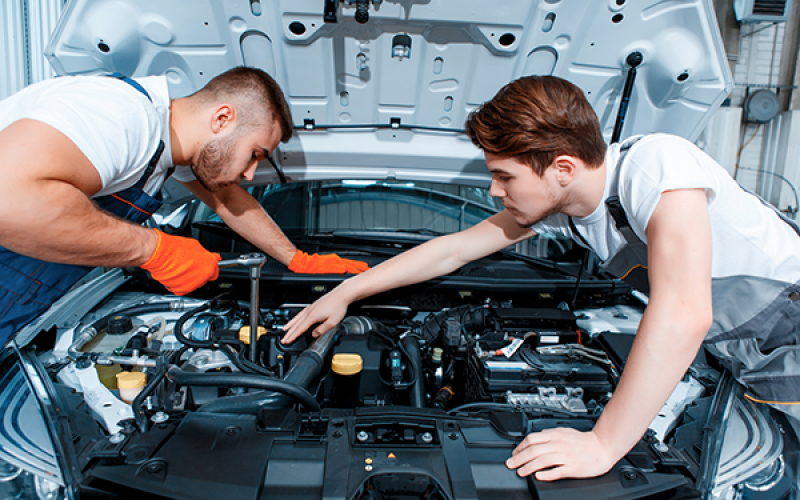All Categories
Featured
2 of the most essential tire solutions are tire rotation and placement. If you're unfamiliar with what tire rotation and positioning require, here's a comprehensive appearance at why they matter and just how they profit your vehicle.
What Is Tire Rotation? Tire turning refers to relocating your tires from one setting to one more to guarantee they put on uniformly. The reason tire turning is essential is since not all tires wear the very same way.
By revolving your tires on a regular basis, you can stabilize out the wear throughout all four tires. This helps them last much longer and permits even more even grip, improving handling and security. Most suppliers suggest turning your tires every 6,000 to 8,000 miles or as per the vehicle's handbook.
What Is Tire Positioning? Tire placement, also referred to as wheel alignment, describes the procedure of adjusting the angles of your automobile's wheels to fulfill the manufacturer's specs. The goal of alignment is to make sure that all four tires are directing in the right direction and at the proper angles, which enables for ideal handling, safety, and tire life.
There are three primary placement angles that are readjusted throughout a placement check:

Camber: The tilt of the wheels when viewed from the front. If the camber is off, it can result in irregular tire wear, as the tire will not make full call with the roadway surface. Wheel: The angle of the steering axis when seen from the side. Appropriate caster placement ensures that your automobile is stable when driving straight which your steering wheel returns to its regular setting after a turn. Toe: The angle at which the tires direct internal or external when checked out from above. Wrong toe positioning can create the tires to drag, bring about irregular wear and minimized fuel effectiveness. Misalignment can take place with time due to regular driving or from striking challenges like aesthetics or craters. If your positioning is off, it is necessary to obtain it examined and remedied to prevent issues down the roadway.
Why Tire Rotation and Placement Issue. Boosted Tire Life:. Normal tire rotation ensures even tire wear, aiding you obtain one of the most mileage out of your tires. Uneven wear can cause you to replace tires too soon, which can be costly. When your tires wear equally, they last longer, saving you cash in the long-term.
Boosted Vehicle Handling:. Proper positioning keeps your automobile driving straight and steady, particularly at greater speeds. Misalignment can create your automobile to pull away, making it more difficult to steer. By keeping your tires lined up, you ensure your car takes care of much more efficiently and naturally.
Boosted Security:. Tires that are not revolved or straightened correctly can use erratically, affecting just how well your lorry quits and edges. Misaligned tires or tires with irregular wear patterns may create decreased grip, especially in wet or icy conditions, leading to a higher danger of crashes.
Much Better Gas Performance:. Tires that are misaligned can develop rolling resistance, implying your engine needs to function more challenging to relocate the automobile. This boosts gas intake and reduces your vehicle's gas performance. Appropriate tire alignment lowers rolling resistance, which can boost gas mileage.
Signs Your Tires Need Rotation or Alignment. While it's vital to remain on top of routine tire turnings and alignments, there are a few signs that may suggest your tires need attention:
Irregular Wear: If you discover that a person tire is a lot more used than the others, it's likely time for a turning. Guiding Pull: If your auto pulls away or feels off-center, it could be an indication of imbalance. Resonances: If you really feel resonances in the guiding wheel or the cars and truck, it might be due to an alignment problem. Noisy Tires: Squealing or loud tires could indicate inappropriate rotation or misalignment. If you observe any one of these indicators, it is necessary to get your tires checked by a specialist.
Just How Often Should You Rotate and Align Your Tires? Tire turning need to usually be done every 6,000 to 8,000 miles, though this can vary based on your driving conditions and the kind of automobile you drive. It's additionally an excellent concept to have your tires rotated whenever you obtain an oil adjustment.
For placement, you should have your tires lined up every 1-2 years, or much more regularly if you observe any issues with dealing with or unequal tire wear. If you hit a big gap or visual, it's wise to get a positioning check today.
Conclusion: Routine Upkeep for Optimal Performance. Tire rotation and alignment are 2 straightforward yet vital solutions that maintain your vehicle running smoothly, effectively, and safely. By revolving your tires regularly and keeping your wheels effectively aligned, you can extend the life of your tires, improve handling, and appreciate better gas performance.
Latest Posts
Don’t Miss Exclusive Auto Repair Offers in Chicago at Montclare Auto Repair
Improve Your Home's Exterior with Weathercraft's House siding Solutions
Safeguard Your Financial Investment with Professional Rain Gutter Installation
More
Latest Posts
Don’t Miss Exclusive Auto Repair Offers in Chicago at Montclare Auto Repair
Improve Your Home's Exterior with Weathercraft's House siding Solutions
Safeguard Your Financial Investment with Professional Rain Gutter Installation